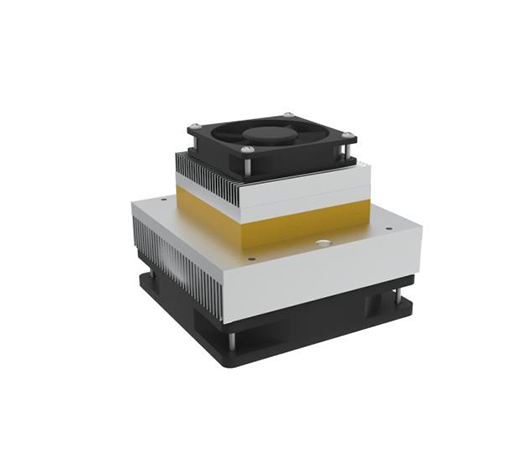
In car refrigerators, thermoelectric cooler assemblies are integrated to create a compact and efficient cooling system. They are responsible for maintaining a low temperature inside the refrigerator, ensuring that perishable items, beverages, and medications remain fresh and chilled during travel. By leveraging the thermoelectric effect, these assemblies provide a reliable and energy-efficient cooling solution for car refrigerators, enhancing the convenience and comfort of road trips and long journeys.

Car refrigerators require thermoelectric cooler assemblies to achieve cooling functionality. These components utilize thermoelectric effects to convert electrical energy into cooling power, thereby maintaining the internal temperature of the car refrigerator below the ambient temperature. This helps keep food and beverages fresh and cool while eliminating the reliance on traditional refrigerants, providing a more environmentally friendly and energy-efficient solution.

The cooling principle in a car refrigerator is based on thermoelectric refrigeration technology, where thermoelectric cooler assemblies utilize thermoelectric effects to generate a temperature difference between two different types of conductive materials through an electric current. This temperature difference is then utilized to achieve the cooling effect. When the electric current passes through the conductive materials, one material becomes hot while the other becomes cold, rapidly cooling the air or liquid inside the car refrigerator. This thermoelectric cooling technology is efficient, reliable, vibration-free, and noiseless, enabling the car refrigerator to effectively maintain low temperatures and preserve food and beverages.




Thermoelectric devices have various applications in beauty cabinets. The thermoelectric effect is a physical phenomenon that converts temperature differences into electrical energy, and thermoelectric modules utilize this effect for temperature regulation and energy conversion.
1, Temperature Control and Adjustment: Beauty cabinets may require maintaining a certain temperature range to preserve the quality and stability of the products inside, such as cosmetics and skincare items. Thermoelectric assemblies can be used to monitor and regulate the internal temperature of the cabinet, ensuring that the products are kept at suitable temperature conditions.
2, Insulation Function: Thermoelectric assemblies can serve as insulation devices, helping the beauty cabinet maintain a constant temperature and avoiding temperature fluctuations that could affect product quality.
3, Refrigeration Function: Certain cosmetics and skincare products need refrigeration to extend their shelf life. By reversing the working principle, thermoelectric modules can transfer heat from the cabinet, achieving a refrigeration effect.
4, Energy Recovery: Beauty cabinets may use electronic devices or lighting, and thermoelectric assemblies can convert the excess heat generated inside the cabinet into electrical energy for recycling and reducing energy waste.


The thermoelectric cooling assembly is a device capable of converting thermal energy and electrical energy into each other. Through this thermoelectric effect, temperature control and regulation can be achieved in dehumidifiers.
1, Temperature Regulation: The performance of dehumidifiers is closely related to the operating temperature. Thermoelectric cooling assembly can be used as temperature controllers to help maintain the dehumidifier within an appropriate working temperature range, thereby improving dehumidification efficiency.
2, Heat Exchange: Dehumidifiers require heat exchange between the condenser and evaporator to achieve the condensation of moist air and the evaporation of dry air. Thermoelectric assembly can play the roles of condenser and evaporator by controlling the direction of the electric current to achieve the condensation of moisture and evaporation of water vapor.
3, Energy Saving: Thermoelectric components can help improve the energy efficiency of dehumidifiers. In some high-end dehumidifiers, thermoelectric assembly are combined with other high-efficiency systems, such as compressors or adsorbents, to make the dehumidifier more energy-efficient.
4, Precision Control: Thermoelectric assembly can achieve precise temperature control by adjusting the magnitude of the electric current. This is useful for achieving precise humidity control under specific environmental conditions.
5, CFC-Free: Compared to traditional refrigerants, thermoelectric cooler assembly do not require the use of CFCs, which gives them an environmental advantage.


Application of thermoelectric cooler assemblies in wine cabinets mainly involves temperature control and energy utilization. Thermoelectric components, also known as thermoelectric modules or Peltier elements, are devices based on the thermoelectric effect that can convert electrical energy into heat energy and vice versa.
1, Temperature regulation: Thermoelectric components can perform cooling and heating functions, making them suitable for regulating the temperature inside wine cabinets. This is crucial for storing wines and other alcoholic beverages as stable temperature control helps maintain the quality and taste of the wines.
2, Temperature balance: Temperature imbalances may occur within wine cabinets, with some areas being warmer while others are cooler. Thermoelectric components can help balance the temperature, ensuring consistent temperature levels throughout the wine cabinet.
3, Energy efficiency: Compared to traditional refrigeration systems, thermoelectric components have higher energy conversion efficiency. Utilizing thermoelectric components in wine cabinets can lead to reduced energy consumption and achieve energy-saving effects to some extent.
4, Precise control: Thermoelectric components can achieve precise temperature control by adjusting the direction and magnitude of the electric current. This allows the wine cabinet to reach the desired temperature in a shorter time and maintain a constant temperature more easily.


The charging box is responsible for storing and charging batteries during drone operations, and high temperatures can have adverse effects on battery performance and lifespan. Thermoelectric cooling devices utilize the thermoelectric effect to achieve temperature regulation, transferring heat from the inside of the charging box to the external environment, thereby keeping the batteries within the appropriate operating temperature range. This device has a simple structure and compact size, capable of rapidly lowering the temperature of the charging box and providing stable cooling effects. By using thermoelectric cooling devices, drone charging boxes can better protect stored batteries and ensure their reliability and performance in high-temperature environments, thereby providing drones with longer flight times and more reliable operations.


Our team of temperature control experts will send specialists to
answer your questions one by one.

Looking for more
information?

0755 23405284
Email: sale02@hj-tc.com
Add: 3/F No.5 Building,Yesun Pingshan Life and Health Technology Park, No. 19 Linhui Road,Pingshan District, Shenzhen, Guangdong,CN.
©2019- 2024 Huajing Co.,Ltd.Copyright